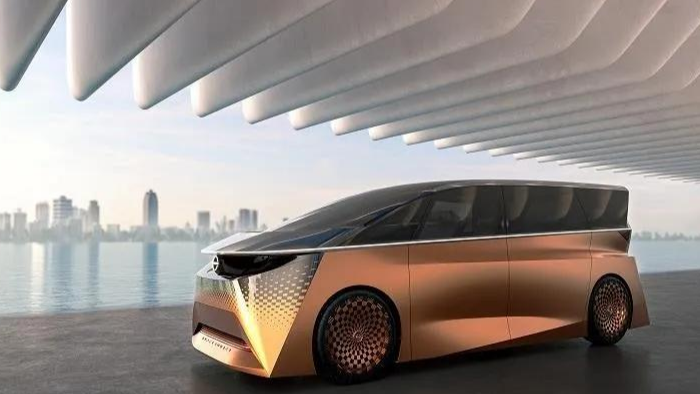Why Have Honda and Nissan Merged?
Advertisements
In an unexpected turn of events, two titans of the automotive world, Honda and Nissan, have announced their decision to mergeThis monumental decision comes at a time when the global automotive industry is undergoing significant transformationThe legendary figures behind these companies, like Soichiro Honda, who founded Honda out of personal conviction and passion for innovation, would certainly have mixed feelings about such a monumental step—a blend of nostalgia and anticipation for what this union might bring.
Honda’s story began in the aftermath of World War II, in 1946, when Soichiro Honda established his technical research institute
As a company that transitioned from motorcycles to automobiles, and eventually into the realm of business jets, Honda has experienced tremendous growth and innovation over the decadesToday, it stands as Japan's second-largest car manufacturer, while Nissan, founded in 1910, has also carved out a significant place in automotive historyThe duo’s journey illustrates how both companies have weathered remarkable changes in the competitive landscape.
Together, these two automotive giants now face the critical challenge of merging their operationsTheir initial aim is to establish a holding company that integrates their technological research and production effortsMitsubishi, a significant ally for Nissan, will also be included in this new structure, signifying the deepening ties among Japanese automakers during a time when external market pressures are mounting.
Looking back, the synergy between Honda and Nissan began developing earlier this year
- New Challenges from Technology to Industry Chain
- Why Apple Continues to Reject Nvidia
- Digital Currencies Reshape Finance
- Healthy Plus Group Undergoes Major Transformation
- Is the Media Facing an End in the Age of AI?
In March, discussions about collaborative business operations began in earnest, culminating in the establishment of a partnership focused on streamlining software and componentsHonda has made significant strides in hybrid technology, while Nissan has been a pioneer in electric vehicle development, bringing the Leaf to market as the world’s first mass-produced electric vehicle back in 2010, which set off a wave of consumer interest worldwide.
Despite Honda's robust global sales of 3.98 million units and Nissan’s 3.37 million vehicles sold, both companies recognize the need for greater scale and collaborationTheir combined sales, including Mitsubishi’s 780,000 units, could add up to a staggering 8.13 million vehicles, propelling them to the third largest automotive group worldwide behind Toyota and Volkswagen
This joint initiative is significant, not only from a numerical perspective but also as a means to enhance their competitive stance against emerging players in the market.
Why, one might ask, would Honda and Nissan consider merging and set aside their unique corporate identities? The answer lies deeply rooted in both external market pressures and internal challenges they faceThe rapid advancements in the electric vehicle sector, especially in markets such as China and the United States, have placed enormous demands on traditional Japanese automakers.
Japan, once a pioneer of electric vehicles in the 1990s, saw initial commercial failures primarily due to technological limitations of the batteries available at the time

Now, with companies like Tesla selling nearly 6.39 million units annually and Chinese manufacturers like BYD cracking the world's top ten, the landscape has shifted dramaticallyThe same internal strife that many manufacturers are currently experiencing is evident in Honda and Nissan.
In recent years, both companies have faced declining revenue and market share, especially with Honda expecting a mere 5% growth in 2023 and anticipated losses looming over the 2024 fiscal yearWith corporations like Toyota establishing new electric vehicle factories in China to boost production, the pressures have only intensifiedNissan, on the other hand, has been grappling with declining sales figures in both the US and Chinese markets.
Amidst such a turbulent backdrop, it is clear that the merger could be a necessity—albeit an astute and logical one
By combining strengths, both companies hope to navigate the "century of automobiles," ensuring they secure a robust position in this new eraAs they embrace this synergy, the potential for creating innovative electric and hybrid offerings could be beneficial, allowing them to regain lost momentum and consumer interest.
However, the path forward is fraught with challengesIntegrating two distinct corporate cultures, management styles, and technological frameworks will require careful navigationTransforming potential clashes into advantages will be pivotal as Honda and Nissan work togetherThe success of this merger could reshape the future of both companies and establish a new collective identity that resonates with the next generation of consumers globally.
Looking ahead, excitement and curiosity abound regarding how this endeavor will unfold
Will Honda and Nissan be able to reclaim dominance within the global automotive industry? Can they break new ground in the emerging electric vehicle market? Observers and enthusiasts alike are left to contemplate these questions that will unfold with timeWhile the merger presents risks, it simultaneously offers a canvas for innovation and reinvigoration of both brands.
As the automotive landscape evolves, the union of Honda and Nissan signifies much more than just a strategic alliance; it embodies the spirit of adaptation and resilience in a fiercely competitive marketTheir collaboration could very well become a blueprint for how established brands might succeed in the era of rapid technological changeThe world is watching with bated breath, eager to witness what lies ahead for two of Japan's most revered automotive manufacturers.
Post Comment